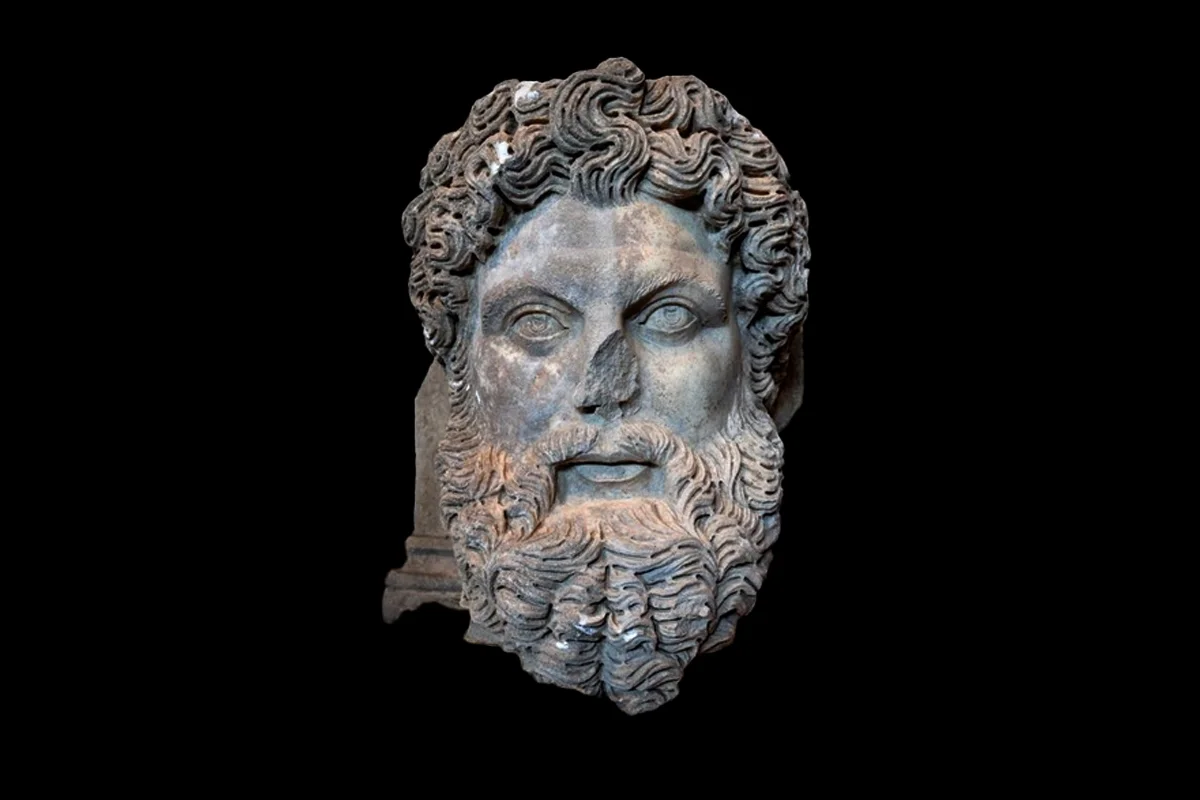Archaeologists have discovered a marble head depicting Zeus during excavations in ancient Aphrodisias.
Aphrodisias was a Greek Hellenistic city in the historic Caria cultural region of Anatolia, Turkey. The city was named after Aphrodite, the Greek goddess of love, where a cult centre emerged with the dedication of the Sanctuary of Aphrodite Aphrodisias.
During antiquity, Aphrodisias was renowned for its artisans and schools for sculpture, exporting building facades and sculptures to all corners of the Hellenistic and Roman world.
Many full-length statues have been previously discovered in the region of the agora, in addition to trial and unfinished pieces associated with the schools.
The city was destroyed by an earthquake in the early 7th century AD, being reduced to a small fortified settlement on the site of the ancient theatre (Odeon).
In a press statement by Mehmet Nuri Ersoy, Minister of Culture and Tourism, excavations near the Sanctuary of Aphrodite Aphrodisias have uncovered a bearded marble head that was part of an architectural console.
According to the archaeologists, the head depicts Zeus, the sky and thunder god from the Ancient Greek pantheon, who ruled as the king of the gods on Mount Olympus.
Minister Ersoy, said: “The marble head, which reunited with the light of day after centuries, exhibits the splendour of Zeus, the most powerful and important god in Greek mythology.”
The head, which has been dated to the 2nd or 3rd century AD, measures 66 cm’s in height and is made from a single block of locally sourced medium-grained Aphrodisas marble.
“The magnificent drill work on the hair and beard belongs to a top Aphrodisias sculpture workshop. The sophisticated depiction of the powerful divine image gives the head a powerful effect,” added Minister Ersoy.
Header Image Credit : Republic of Türkiye Ministry of Culture and Tourism
Sources : Republic of Türkiye Ministry of Culture and Tourism





